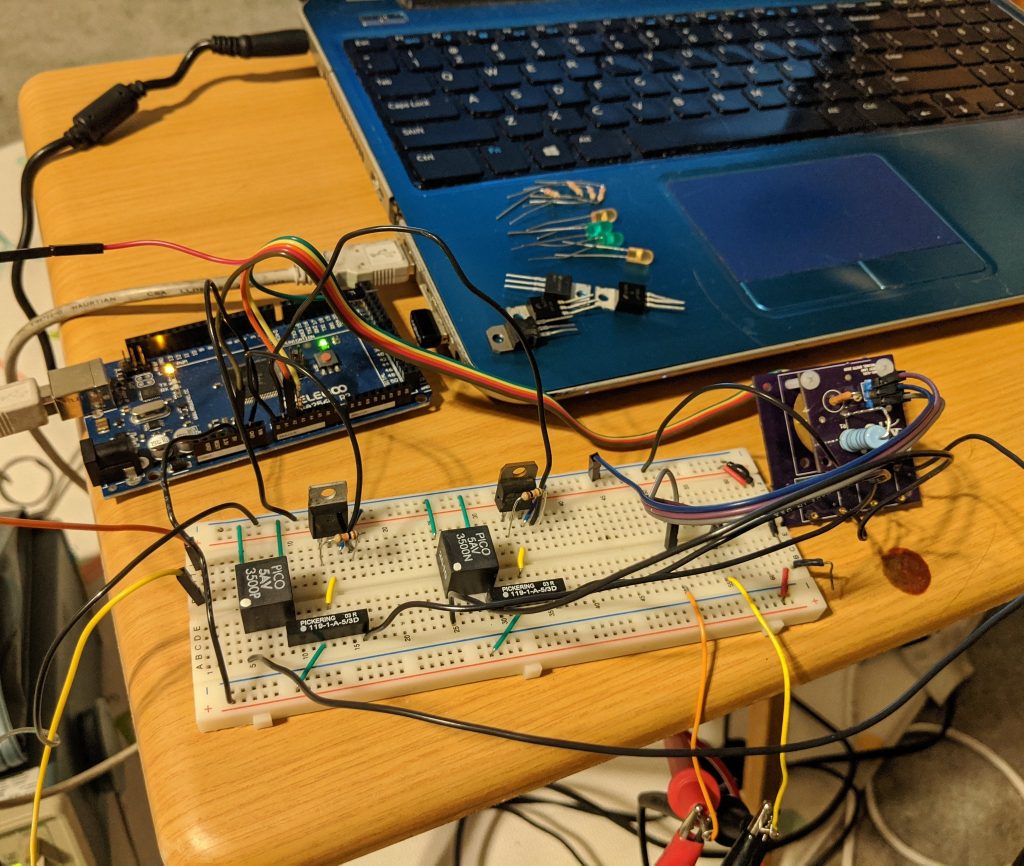Finally, we have HV switching and isolation! Over the weekend I put together the AIS-ILIS1 V4 prototype on the breadboard with the new micro HV reed relays and control circuit using the old V1 board and new control code for safe switching. Slowly powered things on, and it works! Houston, we have switching!

I first started at a low rep rate of 0.5Hz, which can be seen in the video below. In order to keep the switching components at safe operating levels, transition delays are added between the positive and negative cycles to bleed off any remaining charge in the HV filter capacitors as well as accounting for the HV supply fall time. This delay can be seen very briefly during the zero-crossing of the signal.
I eventually worked my way up from 0.5Hz to 5Hz to start stress testing the circuit and exploring response at higher frequency switching. So far across the range, the circuit performs perfectly without issue.
As mentioned before, ILIS thrusters allow for both +/- ion extraction from the fuel, eliminating the need of a conventional neutralizer. To prevent excessive charge buildup of the ionic liquid fuel, polarity must be reversed to emit the opposite ions over some period of time. Charge buildup can lead to things like ceased emission and even arcing. In addition, it was found early on that electrochemical degradation of the emitters occurs very rapidly if a minimum switching frequency is not met, typically on the order of ~1Hz. Normally, ILIS is run in emitter pairs driven 180 degrees out of phase, so satellite neutralization occurs immediately (separate issue from fuel neutralization). For a Cubesat module this is quite easy with larger space, however this becomes a major challenge at the PQ level. In literature, ILIS has been operated at very low freq on the order of ~1Hz or less, though in theory it can be run much higher. Since the ILIS1 PQ module can only accommodate 1 emitter, one of my goals will be to explore the effect of rapid switching on single beam neutralization.
High voltage switching and isolation for this PQ-level thruster has been the single biggest challenge of the build to date. Now that this major obstacle has been overcome, all that is left is waiting for the new V4 boards to arrive to solder up and confirm the integrated system!
